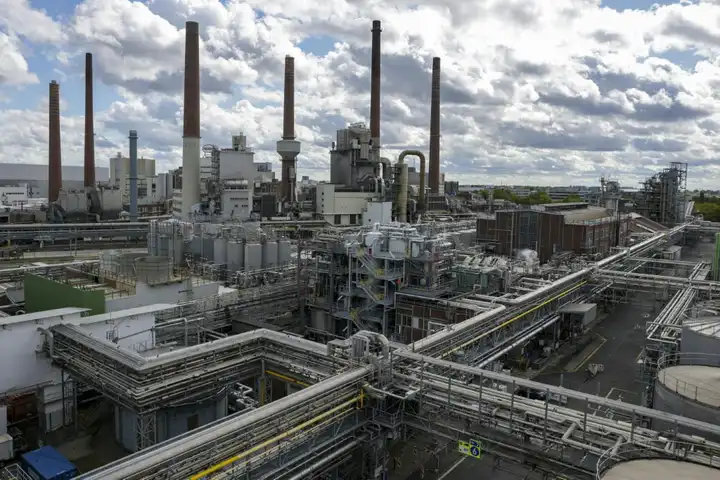Germany’s Economic Engine Is Stalling
For decades, Germany’s manufacturing sector has been the envy of the world — a finely tuned machine driving European prosperity. But this engine is now sputtering.
New government data show that factory orders in Germany fell by 0.8% in August, marking the fourth consecutive monthly decline. It’s not just a technical slowdown; it’s a warning light flashing on the dashboard of Europe’s economic powerhouse.
For Chancellor Friedrich Merz, who campaigned on promises to revive growth and restore industrial competitiveness, this is a harsh reality check.
Merz’s Recovery Plan Meets Industrial Reality
Merz took office amid expectations that he would “restart the German miracle.” He pledged to cut red tape, stabilize energy prices, and strengthen export competitiveness. But the data tell a different story.
According to the Federal Statistics Office, foreign demand collapsed by 4.1%, driven by falling orders from both eurozone neighbors and global trading partners like China and the U.S.
Only domestic demand, which rose by about 4.7%, prevented a steeper fall. Yet, the overall picture remains bleak — especially for a country whose identity and economic stability have long relied on export success.
Economists are now asking: Can Merz’s economic vision survive a global downturn?
Inside the Numbers: Where the Pain Is Felt Most
The decline in factory orders isn’t uniform — it’s concentrated in Germany’s core industrial sectors:
-
Machinery and equipment manufacturing, the pride of the Mittelstand (Germany’s mid-sized firms), saw sharp order cuts.
-
Automotive suppliers, facing electric transition costs, are delaying new projects.
-
Chemicals and energy-intensive industries continue to struggle under high costs and tighter environmental rules.
The result? Factories are slowing production schedules, hiring freezes are becoming common, and export pipelines are thinning.
The Political Blowback
For Merz, the political cost may be as significant as the economic one.
Opposition lawmakers have seized on the latest figures, calling them evidence that “Merz’s economic agenda is failing ordinary Germans.”
Meanwhile, industry leaders are pressing the government to act swiftly with incentives, tax cuts, and targeted stimulus to prevent a manufacturing recession.
Public frustration is growing too. Workers fear job cuts, and small business owners complain that bureaucracy and energy costs are eating into profits.
The optics are not good for a leader who campaigned on stability, strength, and revival.
Global Headwinds, Local Pressures
Germany’s woes are part of a broader global slowdown — but domestic vulnerabilities make things worse.
-
High energy costs persist despite temporary relief measures after the 2022–23 energy crisis.
-
Interest rates across the eurozone remain high, tightening business credit.
-
China’s sluggish recovery has reduced demand for German machinery and cars.
-
And the global shift in supply chains means more companies are sourcing production outside Europe.
For a country whose exports once symbolized reliability and precision, this new landscape is profoundly unsettling.
Can Germany Bounce Back?
Analysts say that while the short-term outlook is grim, there are still pathways to recovery — but they’ll require bold policy action.
-
Targeted Stimulus for Industry: Incentives for green technology, machinery, and small manufacturers could stabilize production.
-
Energy Reforms: Reducing industrial power costs is key to staying competitive.
-
Diversifying Exports: Germany needs to reduce dependence on China and the EU by expanding trade with Africa, Latin America, and Asia-Pacific markets.
-
Innovation Investment: Encouraging AI, automation, and green industries could future-proof its economy.
If Merz can shift focus from austerity to innovation, he might still rewrite the story.
A Turning Point for Europe’s Powerhouse
The German slowdown isn’t just Germany’s problem — it’s Europe’s problem. The continent’s growth engine is sputtering at a time when global competition is rising, and Europe’s economic influence is being tested.
If factory orders keep falling, Europe could face ripple effects in trade, employment, and political confidence. The EU’s recovery depends heavily on whether Germany can stabilize itself.
Conclusion: Merz Faces His Defining Test
Chancellor Merz came into office promising to restore confidence and rebuild momentum in Europe’s largest economy. But as the data now show, the task may be far harder than expected.
With four straight months of declining factory orders, Merz faces a defining moment: either he acts decisively to save German industry, or he risks watching the country’s manufacturing pride slip further away.
In the factories of Munich, the ports of Hamburg, and the industrial zones of the Ruhr, the message is clear — Germany’s engine is running low on power, and the world is watching to see if Merz can restart it.










